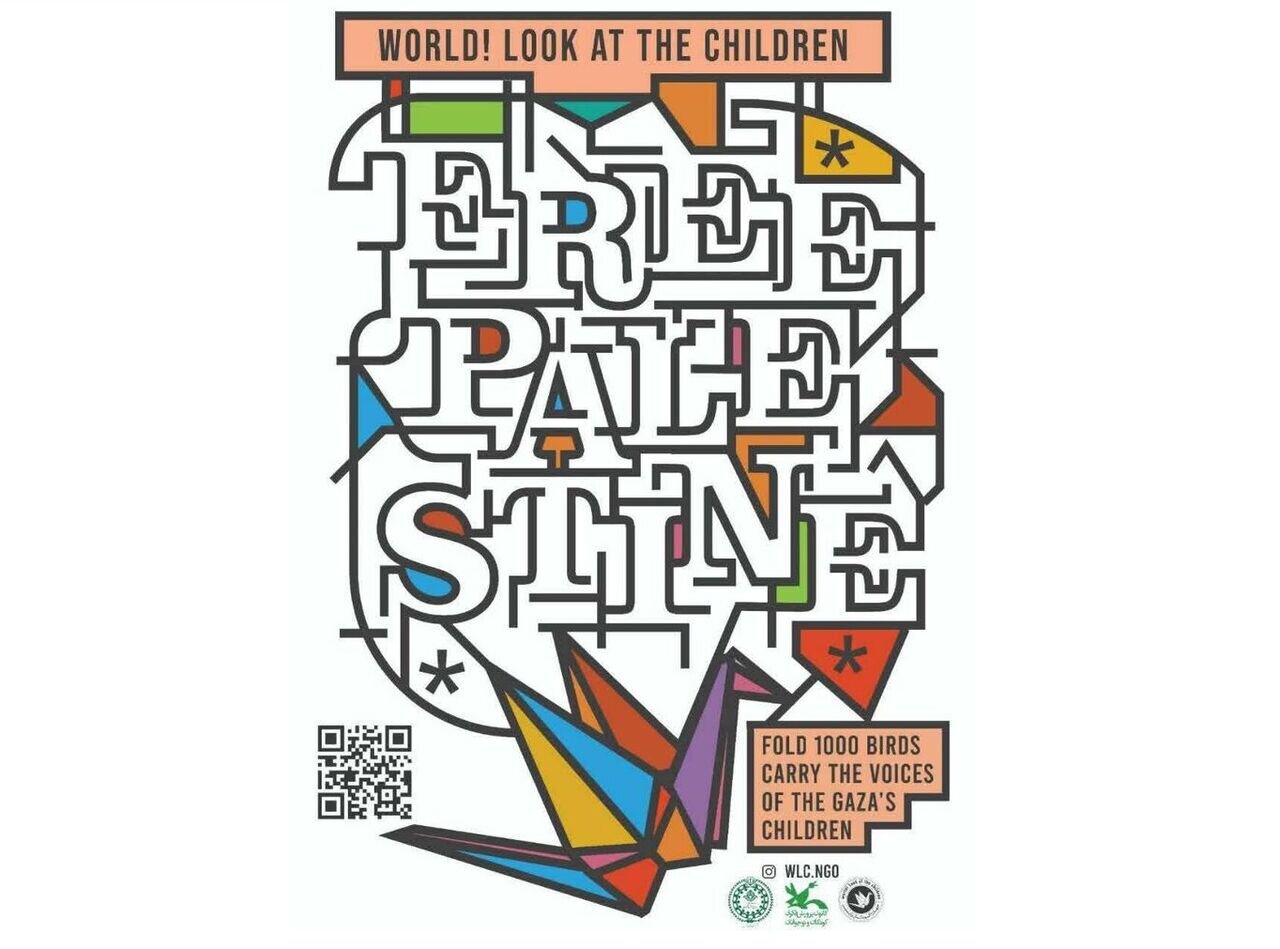"World! Look at the Children" campaign launches to inspire global solidarity with Palestinians

TEHRAN- The "World! Look at the Children" campaign has been officially launched, inviting children and adolescents in Iran and around the world to participate by creating paper cranes in support of the oppressed children of Palestine. They can share videos of their efforts across social media platforms as a gesture of solidarity.
Organized by Iran's Institute for Intellectual Development of Children and Young Adults – Kanoon, the initiative aims to raise awareness about children's rights, including the Convention on the Rights of the Child, and to shed light on the plight of children in Gaza, Palestine, and Iran—victims of brutal attacks by the Zionist regime, IRNA reported on Tuesday.
Participants are encouraged to join the "World! Look at the Children" campaign by producing a 30-second video demonstrating the making of a paper crane. They should invite friends to participate and share their videos on social media platforms such as Instagram, mentioning the campaign account @WLC_NGO.
Additionally, content can be shared through the campaign's pages and channels on messaging apps, also under the handle @WLC_NGO, encouraging others to join.
The "World! Look at the Children" campaign emphasizes the principle of enjoining good and forbidding evil as the most practical ethical and humanitarian act in current circumstances. It advocates for creative approaches to raising awareness about children's rights.
Furthermore, pilgrims participating in the Arbaeen walk can contribute by making paper cranes using origami or folding techniques during their journey, sharing videos, and gifting cranes to fellow pilgrims to promote the campaign.
According to the call, individuals of all ages—from children to adults—are invited to submit their works from August 11 to October 13, coinciding with National Children's Week, to the campaign's secretariat.
The paper crane is a universally recognized symbol of peace, hope, and friendship, representing the desire for harmony and the healing of wounds caused by war and conflict. Its story is rooted in the life of Sadako Sasaki, a young Japanese girl who was affected by the Hiroshima atomic bombing during World War II.
As a victim of radiation sickness, Sadako believed in the Japanese legend that folding a thousand paper cranes would grant a wish and bring about recovery from illness. Inspired by this hope, she dedicated herself to folding cranes, aiming to reach her goal despite her deteriorating health.
Tragically, Sadako passed away at the age of 12 after completing 644 cranes, falling short of her goal. Her friends and classmates, moved by her courage and wish for peace, folded the remaining cranes in her memory, creating a legacy that continues to symbolize resilience, peace, and the universal desire to end conflict.
Today, the story of Sadako and her cranes inspires countless peace movements worldwide, emphasizing the importance of compassion and hope in the face of adversity. The paper crane remains a powerful emblem encouraging efforts toward global harmony and the protection of children's rights everywhere.
SAB/
Leave a Comment